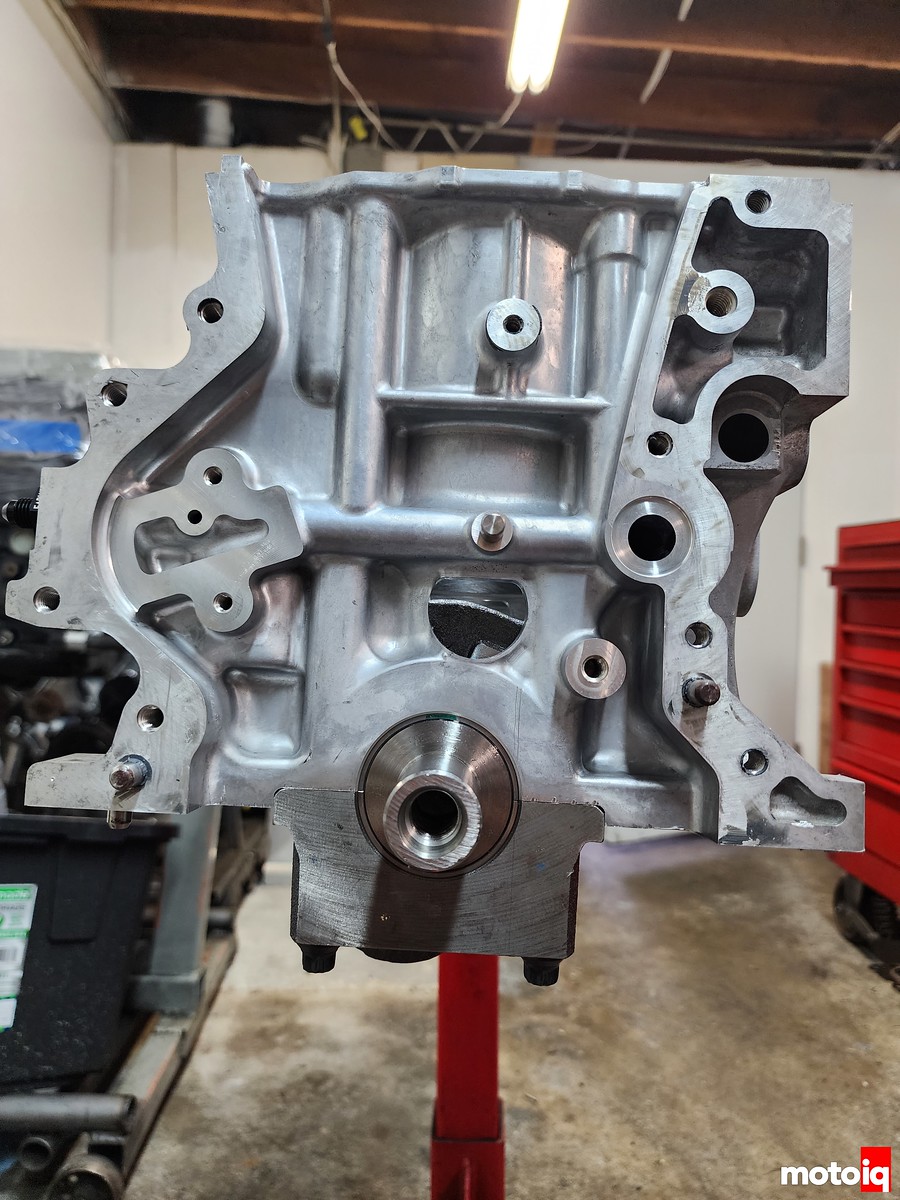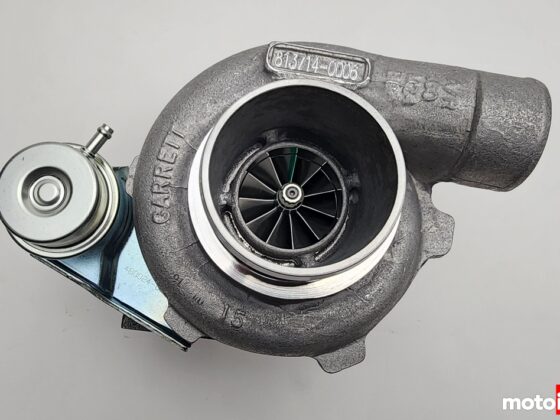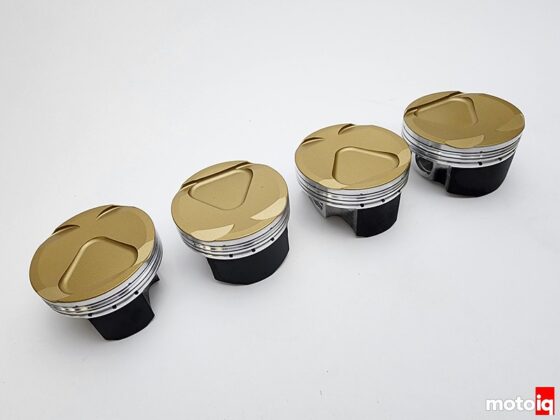
The piston skirts have a polymer coating for longer life, less noise, and less friction. The coating is very high quality and exhibits little wear even after a bit of use. The ring grooves are also very narrow to fit a high-performance and very low-tension ring set!

Perhaps the coolest feature is the asymmetric skirt design! The piston skirt on the higher-loaded thrust side is wider and has more surface area than the less-loaded non-thrust side. This way the higher-loaded, higher-wearing thrust side of the piston has more support but the more lightly loaded side of the piston is smaller for less weight and friction. The OEM pin boss has to be cut down for minimal weight and friction. We will have to add more support here in our piston design.
Almost all of these features are things we like to incorporate into the custom pistons we have made for our customer engines. A lot of these features were developed in powersports and auto racing and it’s awesome to see them trickle down into OEM pistons. The MR20DD OEM piston is one of the most advanced ones we have seen to date.

The OEM piston rings are pretty advanced too. They are very narrow for low tension and less friction, but DLC or PVD coated for long life. We didn’t measure them but the compression rings are about 1mm and the oil rings are about 4mm. Low tension rings tend to conform to the cylinder walls when combustion pressure is applied for good sealing so low tension does not necessarily mean poor seal. Thin rings also mean lower mass which results in more stable rings sealing at high rpm as the rings have less tendency to float and chatter away from the cylinder walls at around TDC.




7 comments
I wouldnt´t worry too much about the unsupported main caps.
AMG M139 and BMW B58 have 2-bolt main caps without any girdles and they do just fine with one being the highest specific power 4-cyl ever made and the other being capable of 1000hp with bolt-ons.
Tiny main bolts ar a drawback though.
Interestingly the bore/stroke numbers (84/90.1) are also quite similar to the AMG 83/92 and BMW 82/94.6.
That goes with my understanding that a small cylinder bore with a long stroke almost always lends itself well to turbocharging. In part due to faster burn time.
Have you looked towards the MR16DDT oil pump assembly? No balance shafts and looks to be a straight swap to the MR20DD block. Also the MR16DDT comes with a girdle, which I’m sure with some machining would fit the MR20DD.
It’s not just the matter of two bolts, it’s the flimseyness of the caps and the register area of the caps. Due to the compressed time we didn’t investigate the Juke gridle but my thinking is it probably helps if it is adaptable. We just didnt have the time to have studs made and then machine and align bore the block.
Mike, you mentioned tight timeframe – is this a SEMA project? Doesn’t make any difference to me one way or the other, just curious.
stick around and find out!
Will do!
Very cool to see all this tech in a lowly Sentra. Subaru, why can’t you even do this on your “sport” engines?
I like how the piston pins are already showing slightly concerning wear patterns even at stock power level and not much mileage. I thought the connecting rods would be the real main underbuilt parts of the bottom end, but nope, turns out the whole bottom end is underbuilt. Oh, Nissan.